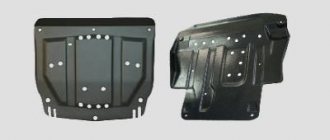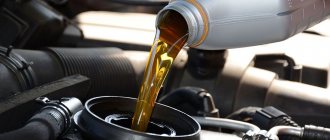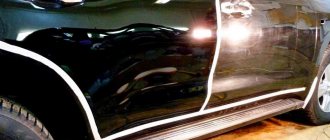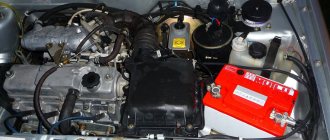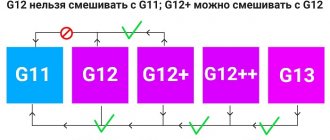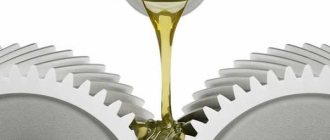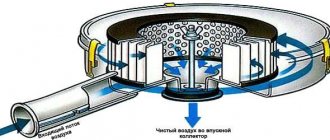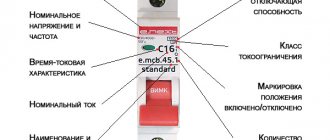Owner reviews
If you have not yet decided which protection is better, perhaps reviews from car owners will help you make the right choice.
Composite protection
| Positive reviews | Negative reviews |
| Very light | High price |
| Easy to install | The holes were slightly shifted |
| Withstands hitting rocks |
Steel protection
| Positive reviews | Negative reviews |
| Low price | Started to rust |
| Takes hits well | Noise appeared after installation |
| Quick installation | Very heavy |
What is crankcase protection?
The protection of the internal combustion engine (ICE) of a car is a plate. It is attached to the bottom of the car. It must be installed in the following cases:
- when driving on bad roads with unstable road surface quality;
- in winter, in regions with difficult climates, the plate will protect the crankcase and the lower part of the gearbox from impacts with blocks of ice and compressed snow;
- when driving on roads with pronounced ruts;
- with frequent collisions with asphalt cracks and deep holes with sharp edges;
- while parking a car with access to curbs;
- when the machine is regularly used on roads with high water levels, sand and gravel;
- during frequent trips out of town and trips on unfamiliar roads.
The roads of Ukraine are a headache for motorists, and this is confirmed by statistics: on average, during 1 month of active use of a car, the driver makes from 3 to 5 collisions with obstacles. In most cases, this is accompanied by impacts on the bottom of the car. As a result, approximately every 10th impact leads to the need for expensive repairs.
Another confirmation of the urgent need to install engine protection is statistics compiled by the Patrol Police Department. It states that in the first half of 2021 alone, 459 officially registered road accidents occurred due to:
- unsatisfactory condition of roads;
- unsatisfactory condition of streets;
- due to the fault of the owners of the road network.
Engine protection will become a reliable companion for the driver and his car. Installation will extend the life of the engine and gearbox, saving money that would have to be spent on repairs. And all this with a one-time installation.
For example, the cost of work and replacement of the pan for the Kia Optima LX 2015. (2.4 gasoline): oil pan - 2200 UAH, oil - 1450 UAH, filter - 180, labor for everything - 850, plus I was left without a car during the repair.
Buy engine protection (specify the car parameters: make, model, year of manufacture, body)
Mechanical protection
The group of mechanical protection means for the hood and bumper consists of:
- deflectors;
- vinyl anti-gravel films;
- polyurethane films;
- polishing agents.
Many will say that there is no point in using a polishing spray when you can install a deflector on the hood and provide a high level of protection. But don't rush to conclusions.
Deflectors
Deflectors are plastic products that are installed on the edge of the hood. Their essence is that due to their shape they change the aerodynamics of the car. This redirects oncoming air flows.
In practice it looks like this. The car is traveling at a fairly high speed. It resists the headwind, which carries with it various debris, dust and dirt. Without a deflector, it all ends up directly on the hood and windshield. Redirecting the air makes it so that all flows pass over the windshield. This ensures protection of the paintwork on the hood, bumper, and additionally prevents contamination and wear of the windshield. Everything looks quite interesting, effective and promising.
It is important that the deflector is made of high-quality material and has the correct shape, tested on stands. Otherwise, it will turn out to be just a decorative element.
The deflector can cause destruction of the paintwork on the hood, as sand, debris and moisture gradually accumulate under it. It's important to keep an eye on him. Better yet, remove the deflector once a year, clean it and reinstall it.
Vinyl films
A material such as vinyl film is also actively used. It is also anti-gravel or armored film. Choose the name that you like best.
One of the advantages of vinyl is its low price. Films are short-lived, they can tear and crack in severe frost, and may not withstand high pressure during washing.
Vinyl anti-gravel films are presented in the form of transparent or matte material. The standard thickness is about 0.1 mm or 100 microns. They are actively used for pasting various car body elements, including the hood. Well protects the paintwork from minor scratches and damage, sand, debris and small branches. Fully transparent vinyl and decorative effect coatings are available. There really are a lot of options.
If you want to save money, choose vinyl. But don’t expect a serious level of protection from cheap films.
Polyurethane films
Pasting with such a film gives more advantages in terms of protecting the hood and body, since the thickness of the coating is from 150 microns. Protects well from chips, scratches, and mechanical damage. Complete anti-gravel.
Another strong argument in favor of polyurethane is that the material transmits ultraviolet radiation. What does this mean in practice? When the time comes to remove the already worn film, or you simply want to change it to a newer and original one, there will be no difference between the pasted and unpasted areas of the car body. They will remain in the same color scheme. But there are also disadvantages here. Although they are not so significant given the existing advantages.
The main disadvantage is the cost. For a meter of high-quality polyurethane film you will have to pay about 3-4 thousand rubles.
The most important characteristics of crankcase protection
To figure out how to choose crankcase protection, it is enough to know the basic parameters that it must meet.
The point of installing engine crankcase protection is that when it hits an obstacle, it takes the impact and absorbs the bulk of the collision energy. The remaining part is transferred to the body or frame, so the protection must be attached to the power elements (spars or subframe).
- The first thing you should pay attention to is how it is attached.
- The second characteristic of protection is its rigidity.
There remains a small space between it and the crankcase, and the protection must be rigid enough so that it does not bend during an impact and damage the crankcase. Increasing the deformation space does not make sense, since in this case the cross-country ability of the vehicle is greatly reduced. When choosing, it is better to give preference to protection that has stiffening ribs, since they significantly reduce the degree of deformation after an impact. A flat, non-reinforced sheet will most likely bend and fail to cope with its main task.
Also, when choosing, you need to pay attention to the form of protection. It should slope slightly downward from the front. Automakers require this. The fact is that cars are designed in such a way that in the event of a frontal impact the engine goes down so as not to injure the driver and front passenger, and the protective sheet should not prevent this.
An important parameter is the strength of the protection. It is desirable that it has as few technological holes as possible. Of course, it is convenient if there is a hole for draining the engine oil, but this, firstly, means a loss of strength, and secondly, to replace the oil filter, the protection will most likely still have to be removed, and the meaning of such a hole is completely reduced to zero .
Finally, don't forget about weight. The heavier the protective sheet, the higher the additional load on the suspension. The optimal weight is considered to be from seven to fifteen kilograms. High-quality engine protection cannot be lighter, and heavier protection will overload the front part of the car.
Crankcase protection - what is it and why?
In appearance, this is a plate covering the engine crankcase, made of metal or especially durable plastic. Unfortunately, not all automakers install engine protection, or more precisely, engine crankcase protection, on their new cars.
The installation of protection primarily concerns Russian-made cars; protection for Ford and other “city” cars of American and Japanese origin is also in demand among buyers.
Practical benefits of installing engine protection
The engine crankcase hangs low over the road; it is the one that gets the most damage from curbs, cobblestones, stumps, deep icy ruts, etc. A hole in the crankcase will lead to oil leakage and engine failure - the most expensive and important component of the car. If this happens near the city, you will still be able to get to the nearest service station, but what if a hole occurs somewhere in the outback, far from civilization?
In order to save money, cars that come off the assembly line are not equipped with full protection, but with a light plastic boot. Meanwhile, this boot will not be able to protect the engine even from dirt, not to mention the numerous impacts of stones flying from under the wheels while driving. If a car is purchased for driving not only around the city, but also outside it, the need to protect the crankcase is not even discussed.
What is the crankcase protection made of?
Among the diversity, two main categories of materials can be distinguished: metal (aluminum or steel alloys) and composite (modern synthetic impact-resistant materials). They have their advantages and disadvantages. Oddly enough, steel metal protection protects the worst of all, and besides, it adds weight to your “swallow”. Aluminum protection performs much better in practice: despite being relatively light, it is durable and allows you to effectively absorb impacts. A new word in technology - protective shields made of titanium. It's expensive and rarely found in parts stores, but the characteristics of titanium protection are very attractive. Titanium is lightweight, like aluminum, and much stronger than steel and aluminum.
How to choose and install engine protection?
The crankcase protection should only be installed by a suitably qualified technician. You can, of course, try to do it yourself, especially since the accessory comes with installation instructions. However, if you think about it, 2 thousand rubles is not a very large amount, considering how much it will cost to install a new pallet if you accidentally damage it during inept installation.
It is important to know that crankcase protection is made for specific models and body types and is selected individually. If you are the owner of a car from the Ford family, then you need to buy protection for the Ford of your modification, and no other.
Other benefits of installing crankcase protection
- The crankcase guard provides an unexpected obstacle for car thieves, limiting access to the engine compartment from below.
- With installed protection, the car engine warms up much faster in winter. At the same time, the protection does not interfere with the cooling of the engine by air flow while the car is moving.
- Crankcase protection has a positive effect on the aerodynamics of the car, which slightly reduces fuel consumption. A trifle, but nice!
Perhaps the only drawback of some protections is that they make it difficult to replace the oil filter. In most cars, the oil filter is installed under the engine, rather than above it. Therefore, without removing the protection, you simply will not get to the oil filter. However, today shields have appeared on sale that have a special hatch for access to the filter, so possible difficulties can be overcome.
Take care and protect the engine and its crankcase - the car will thank you!
Read with this article:
Cold engine start, or how to start the engine in the cold
Ten ways to save fuel in a car with automatic transmission
Daytime running lights (DRL, DRL), which lamps are suitable for them
Types of ABS (ABS) anti-lock braking systems. Benefits of ABS in winter.
Do you need engine crankcase protection?
Let's imagine a situation that often happens on the road. The vehicle has been involved in an accident resulting in some or all of the engine oil leaking out. The problem must be solved immediately, because running an internal combustion engine without lubrication is fraught with serious consequences. Experienced car enthusiasts know that the best solution in this case is to call a tow truck.
Some people think it’s too expensive and are trying to solve the problem in a different way. They buy new oil, but this is not enough, because there is a crack in the pan. To eliminate it, an adhesive base that is resistant to temperature changes is suitable. It's time to fix it. The car is driven onto bricks so that you can climb under it. All this is unsafe and may result in an unexpected fall of the car.
Engine crankcase protection for jeeps is justified, because they often find themselves in off-road conditions, which increases the likelihood of the described problem occurring. Car owners are ready to spend 15 thousand rubles on new equipment. Plus every year another couple of thousand for maintenance, just to be sure of the performance of the internal combustion engine. Is it necessary for cars such as sedan and hatchback, the main purpose of which is driving around the city?
In fact, the engine crankcase is located inside the subframe, and is surrounded on the sides by beams made of rigid and durable material. You can see this for yourself by looking under the bottom of your car. When hitting an obstacle, the beam will absorb the main energy, thereby helping to soften the impact.
Impact on the engine pan can occur when trying to jump over an obstacle. For example, when driving off a split curb. Its sharp side will most likely touch the lower part of the internal combustion engine. To avoid this, simply be careful when driving and parking. Therefore, many car owners consider engine crankcase protection not only to be a useless unit, but also to have certain disadvantages.
Firstly, these are additional costs during vehicle maintenance. A sheet of metal prevents the replacement of the oil filter and lubricant by covering the drain plug. The technician will have to spend time removing it, as this process is quite labor-intensive. As a result, the car owner will receive a bill for a couple of thousand more.
Secondly, the protection reduces ground clearance by about 1–1.5 cm.
Another drawback is that it interferes with the ventilation of the space under the hood. The cooling and air conditioning radiators are not properly ventilated. This is especially dangerous in hot weather.
Thirdly, engine sump protection allows dirt to accumulate from the road. Under the leaf you can find old leaves, sand and chemicals that are used to sprinkle the road in winter. This mass negatively affects the operation of metal elements, so it is recommended to remove the protective unit once a year and clean it.
Is it worth buying engine crankcase protection? The decision is yours. But we advise you to be extremely careful when driving around the city. On the road, you can often come across fragmented parts of the suspension of other cars or metal debris. This is most often the case on highways. From external influences they jump above the ground and can get into the radiator, suspension arms or engine crankcase of a passing car. There is no protection for the suspension, but it is quite possible to protect the internal combustion engine.
Of course, the likelihood of such an object getting into your car is small, but anything can happen. The consequences of this will be serious for the equipment and costly for you. The metal sheet can protect not only the engine crankcase, but also the gearbox. Each car owner independently decides on its feasibility, taking into account the costs of installation, further maintenance and comparing them with possible repair costs.
Methods of protection
If you are really concerned about the integrity and safety of the car body, I strongly recommend that you carefully study this material, consider all the proposed protection options and evaluate the degree of their effectiveness specifically in your case.
It is important to understand that in the city and especially on the highway, no one is safe from a stone, a piece of some object, or various road debris flying into the car. The higher the speed, the worse the damage will be. This is elementary physics, the details of which do not make sense. The main thing here is the cost of collisions with such phenomena. The hood is constantly exposed to negative influences. Constant washing and applying polishes will not help. It is also too expensive to repaint an element or change part of the body once a season.
An obvious consequence of constant chips and scratches on the hood will be the search for an answer to the question of how to remove saffron milk caps on the body. We have already talked about this. But it is objectively simpler and more correct to prevent their occurrence.
There is another solution. It involves the use of protective equipment.
Protection for the hood and body is divided into 2 large categories. These are mechanical and chemical means.
If you have encountered similar solutions yourself, be sure to leave feedback. Write down what means you would recommend using, and what you consider useless and ineffective.
Now we’ll talk about each type of hood protection separately.
Metal engine protection
This protection is good for everything except weight.
- She's tough
- Reliable
- You can even make it yourself from a sheet of good strong steel and choose the thickness and shape you need, then cut it out and install it on the car.
The downside, as already mentioned, will be the heaviness of such a crankcase safety system, and the possible appearance of rust in places where the paint comes off and in places where the protection is attached to the engine. Although it is worth mentioning that there are protections made of stainless metals.
Malfunctions of the crankcase cover and gearbox
Now let's look at the most common malfunctions and breakdowns in this part of the equipment. Due to time, temperature and vehicle use, the skid plate may become deflected. Shock or vibration from the motor may cause the mounting screw to become loose.
Usually, if one bolt is lost, nothing happens, but if there are several, the pallet can drag along the ground, creating significant inconvenience during movement. If it falls or dangles, it must be quickly repaired, as it can catch on the asphalt and sharply hit some part of the bottom, which will lead to breakage. Using a few simple flanges, you can screw it to the structure at the mounting points to avoid danger.
If the pallet falls off and ends up on the road, an emergency situation will arise with all the ensuing consequences. On the other hand, if there is an oil leak and the model is made of plastic, it will gradually become deformed. Motor lubricant is deposited, sand and other contaminants accumulate, the cover weighs more and more, which worsens the aerodynamics of the vehicle.
Description
Since doubts about the need to install the element have disappeared, let’s look at what the engine crankcase protection looks like. Visually, a part is a piece of material that has a shape, size and profile. The product is attached to the bottom of the car and tightly covers the elements and parts that need protection.
Protection must be installed on all types of transport, since the part allows you to avoid most possible risk scenarios. A category of vehicles whose intended use is inconceivable without the use of protection. These are cars that travel over rough terrain, SUVs. Such vehicles include: Toyota Land Cruiser 200, Nissan X-Trail, Land Rover Sport. Cars with low ground clearance are primarily equipped with protection, since they have a high risk of getting into an unpleasant situation.
There is no single standard regulated by legal or international agreements for protection. For this reason, most manufacturers neglect the reliability and functionality of the product, equipping the transport with a plate suitable for use as a decorative element.
To perform the assigned function, the product meets the requirements:
- Strength and rigidity of protection: the use of design techniques in the form of profiling and stiffening ribs, the material and thickness of the sheet are also important;
- The use of technological holes and slots for access to components and elements in the space under the hood of a car;
- The protection does not interfere with the cooling and heat transfer of the power unit;
- The fixation of the product is strong, reliable, and does not violate the geometry and structure of other parts;
- The protection is mounted at a distance from the oil pan and at the same time does not reduce the vehicle's ground clearance.
The selection and installation of protection is approached responsibly, since for each vehicle its design, operational and other requirements are taken into account. For example, the engine crankcase protection on a Mitsubishi ACX car takes into account the year of manufacture and provides a recess for the boot. In addition, the material of the product plays a role.
Design and principle of operation of devices protecting the engine
Engine protection means take the form of pallets made of metal or other material, adapted for installation on a specific car model.
At the moment of hitting an obstacle, the safety device takes the main blow, absorbing its energy.
Requirements for mounting methods and physical properties of engine crankcase protection:
- The shield is attached to the load-bearing parts - frame elements.
- The design of the car engine protection provides for a small space between the crankcase and the shield; an excessive increase in this gap can lead to a noticeable decrease in ground clearance and a decrease in the vehicle's maneuverability.
- The rigidity of the material must ensure resistance to impacts; deflections of the device are not allowed; preference is given to sheets whose design provides an optimal number of stiffeners that reduce the level of deformation.
- The sheet should be positioned with a slight inclination of the plane in the front part, which meets safety requirements; the obligatory inclination is necessary so as not to interfere with the descent of the engine down under the car, provided for by the design of the car in the event of a frontal collision.
- To enhance strength, the number of technological holes in the shield should be minimal.
- The engine protection should have an optimal weight of 7–15 kg.
- When installing safety devices, special rubber gaskets must be used to reduce noise effects.
The weight of the shield, less than seven kilograms, will lead to the fact that the device will not be able to perform the tasks assigned to it. Excessive increase in its weight creates increased loads on the machine. The gravity of the protective device should not create additional loads on the suspension or affect the dynamics of the car or fuel consumption.
Pros and cons of crankcase protection
Proponents of installing protection give the following arguments:
- The engine is the most expensive part of the car, and the unprotected crankcase is its most vulnerable part. A breakdown leads to rapid oil leakage; travel further is only possible with a tow truck or tow truck. If the leak is not noticed in time, it will result in a major overhaul of the engine, or you may even have to buy a new one.
- The plate at the bottom prevents dirt, water and debris, even animals, from entering the engine compartment.
- The bottom, closed at the bottom, prevents the penetration of fraudsters who could, for example, cut through the battery wire from below and de-energize the alarm system.
The opponents' arguments are also quite convincing:
- A steel wheel reduces safety in a frontal collision. When the housing deforms, the engine must move downward, thereby saving passengers. The plate prevents this and strengthens the frame, so the engine can enter the passenger compartment during an impact.
- Ground clearance decreases. Where a car could pass without protection, it will not pass with it.
- It won’t save you from car thieves - it’s easier for them to open the hood lock to gain access to the engine compartment than to tinker under the bottom.
However, it cannot be denied that when driving on bad roads, where the risk of a head-on collision at high speed is very small, the issue of protecting the engine from stones and branches is very relevant. On the other hand, for those who drive exclusively on asphalt, this is not so important, although they also encounter reinforcement sticking out of the road. So this is a purely practical question.
Device
The engine crankcase consists of two main parts - upper and lower. The upper part is integral with the cylinder block and is not subject to any external influences. The lower part of the crankcase, called the sump, is a completely different matter. This is a stamped structure made of relatively thin sheet steel, which plays the role of an oil reservoir. A sealing gasket is installed between the upper and lower parts, and they are connected to each other using bolts. There is a plug at the bottom of the crankcase for draining used oil. Even such a superficial description of this unit allows one to imagine all the consequences that may occur if the oil pan receives serious mechanical damage.
Engine diagram
Aluminum engine protection
Aluminum crankcase protection is very good; firstly, it is much lighter than metal protection and does not rust, which is also important. You can also purchase ready-made car oil pan protection or make it yourself.
If you make it yourself, you can purchase a fairly thick sheet of aluminum, which will provide reliability no worse than metal, because store-bought versions of aluminum protection are often thin and, when hitting a good obstacle, they are often simply deformed or even tear spots appear in them
Why is crankcase protection needed and what types are there?
In cities where the road surface has serious flaws, it is difficult to protect the power unit and transmission from impacts when hitting obstacles and falling into holes. But you can avoid damage to expensive units by installing special crankcase and gearbox protection, which is easy to purchase for most car models. Not only foreign cars need such tuning, but also domestically produced vehicles with high ground clearance, which may not be enough in a critical situation.
